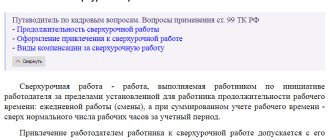Article 125 of the Arbitration Procedure Code of the Russian Federation. Form and content of the statement of claim (current version)
In cases where the executive bodies of a legal entity are both collegial and individual bodies, the question of who is authorized to sign the statement of claim is resolved based on an analysis of the current legislation, as well as the constituent documents and local acts of the legal entity.
When signing a statement of claim by a representative, it is necessary to take into account the provisions established by Art. Art. 59 - 62 AIC.
The APC does not contain requirements for sealing the statement of claim; therefore, this detail is optional in relation to the content of the statement of claim.
Part 1 art. 125 of the APC provides that a statement of claim can also be filed with the arbitration court by filling out a form posted on the official website of the arbitration court on the Internet. At the same time, for a statement of claim containing a request to secure a claim, an additional requirement has been established - it must be signed with an enhanced qualified electronic signature.
———————————
See: Order of the Judicial Department under the Armed Forces of the Russian Federation dated December 28, 2016 N 252 “On approval of the Procedure for submitting documents to the arbitration courts of the Russian Federation in electronic form, including in the form of an electronic document”; Resolution of the Plenum of the Armed Forces of the Russian Federation dated December 26, 2017 N 57 “On some issues of application of legislation regulating the use of documents in electronic form in the activities of courts of general jurisdiction and arbitration courts.”
So, in fact, a claim can be filed in three ways:
1) by sending it to the arbitration court by mail. The statement of claim received by mail and the documents specified in the attachment are accepted by the expedition. The expedition specialist puts a registration stamp on the application, the date and time of receipt;
———————————
See: clause 3.1.5 of the Instructions for office work in the arbitration courts of the Russian Federation (first, appellate and cassation instances) (approved by Resolution of the Plenum of the Supreme Arbitration Court of the Russian Federation dated December 25, 2013 N 100) (hereinafter referred to as the Instructions for office work in the arbitration courts of the Russian Federation).
2) by filing a statement of claim with the office of the arbitration court. In this case, the specialist receiving them puts a stamp on the second copy of the application (copy);
———————————
Right there.
3) by filling out a form posted on the official website of the arbitration court on the Internet.
———————————
See: subsection. 3.3 Instructions for office work in arbitration courts of the Russian Federation; section “Submission of documents in electronic form to courts of general jurisdiction and arbitration courts” of Resolution of the Plenum of the Supreme Court of the Russian Federation dated December 26, 2017 N 57 “On some issues of application of legislation regulating the use of documents in electronic form in the activities of courts of general jurisdiction and arbitration courts.”
2. Part 2 art. 125 of the APC determines the content of the statement of claim:
1. The name of the arbitration court to which the statement of claim is filed must exactly correspond to the name of the arbitration court contained in the Federal Law (see, for example, Article 24 of the Federal Law on Arbitration Courts). The specific arbitration court to which the statement of claim is addressed is determined taking into account the rules of territorial and generic jurisdiction established by Art. Art. 34 - 38 AIC.
2. The name of the plaintiff (legal entity) is indicated in strict accordance with the name contained in the constituent documents. It is acceptable to use both full and abbreviated company names.
The plaintiff (legal entity) is required to indicate its address, which must coincide with the address indicated in the constituent documents (in accordance with Part 4 of Article 121 of the APC, the address of a legal entity is determined on the basis of an extract from the Unified State Register of Legal Entities).
If the address specified in the constituent documents does not coincide with the actual location, the plaintiff should (taking into account the provisions of Part 4 of Article 121 of the Arbitration Procedure Code) simultaneously with filing the statement of claim, file a petition to send court notices to a different (actual) address. Plaintiffs often use a PO Box as a mailing address. We believe that this is quite acceptable. However, let us note that, no matter how the actual address (address for postal correspondence) is indicated, this does not relieve the plaintiff from the obligation to indicate the address in accordance with the constituent documents.
———————————
“In any case, the term “location” should be understood as a clearly defined postal address. Indicating the number of a subscribed mailbox instead of a postal address is considered as a failure by the plaintiff to comply with the requirements for the statement of claim established in Art. 125 of the Arbitration Procedure Code of the Russian Federation, which serves as the basis for leaving the claim without progress" (issue 31 of the recommendations of the NCC at the FAS of the Volga-Vyatka District based on the results of the Council meeting of 02/27/2008 "On the practice of applying procedural legislation").
Considering that representative offices and branches are not legal entities (clause 3 of Article 55 of the Civil Code), the content of the statement of claim must indicate the legal entity itself.
According to established practice, plaintiffs who are legal entities also indicate their taxpayer identification number and (or) main state registration number.
Plaintiffs who are citizens indicate their full last name, first name, and patronymic in accordance with their passport data. In addition, a rule has been established for citizen plaintiffs requiring that they must indicate their place of residence, date and place of birth, place of work, or date and place of state registration as an individual entrepreneur.
The place of residence is the place where a citizen permanently or primarily resides (clause 1 of Article 20 of the Civil Code). The RF Armed Forces proceed from the fact that the fact of residence within the Russian Federation (place of residence) is certified by registration at the place of residence.
———————————
See: decision of the Supreme Court of the Russian Federation of September 20, 2001 in case No. GKPI 2001-1409.
The place of work within the meaning of the commented norm is indicated in cases where the claim is brought by a citizen who is not an individual entrepreneur.
Since a citizen may be unemployed and not have the status of an individual entrepreneur, in order to exclude unfounded determinations about leaving the statement of claim without progress, it is advisable to indicate this directly in the statement of claim itself.
The date and place of state registration of a citizen as an individual entrepreneur are indicated in accordance with the data specified in the certificate of registration as an entrepreneur.
If a so-called procedural plaintiff (prosecutor and other entities entitled to apply to the arbitration court in accordance with Articles 53, 53.1 of the Arbitration Procedure Code) files a statement of claim, then in the case where such an appeal is aimed at protecting the rights and interests of a specific entity (so the so-called “material” plaintiff), the text of the statement of claim must also indicate the name and address of the specified person. If the location (address) of state bodies, local government bodies (other bodies) is not determined in the relevant legal acts, the actual location of the relevant body is indicated in the statement of claim.
Mandatory details of the statement of claim are also telephone numbers, fax numbers, and the plaintiff’s email address. In our opinion, this limits the constitutional right to judicial protection. The fact is that the right to judicial protection itself cannot be made dependent on the presence of any property in the person seeking such protection or on any obligatory relations with third parties (telephone numbers, fax numbers, e-mail addresses can only appear when the plaintiff enters into corresponding obligations with entities providing the necessary services). At the same time, it can be assumed that until the Constitutional Court of the Russian Federation expresses its position on this issue, arbitration courts will apply the innovation in question without delving into the issues of its compliance with Art. 46 of the Constitution of the Russian Federation.
Let us also draw attention to the fact that from the point of view of legal technology, the very idea of the obligatory nature of the above details has not been implemented entirely successfully: the fact is that, when read literally, the requirement to indicate telephone numbers, fax numbers, and e-mail addresses applies only to the plaintiff-citizen ( before the word “numbers” there is not a semicolon, but a comma, which logically connects the short story with the beginning of the phrase “if the plaintiff is a citizen”).
3. The name of the defendant - a legal entity, its address is indicated in the same way as the provisions set out above in relation to the plaintiff. In this case, the taxpayer identification number and the main state registration number (if known to the plaintiff) must be indicated without fail.
In relation to the defendant who is a citizen, the following is indicated:
— last name, first name, patronymic (if available);
- location;
— date and place of birth, place of work (if known);
— one of the identifiers (insurance number of an individual personal account, taxpayer identification number, series and number of an identity document, main state registration number of an individual entrepreneur, series and number of a driver’s license, series and number of a vehicle registration certificate).
We believe that the imperative requirement to indicate at least one of the identifiers may cause some difficulties in practice. For example, the defendants may well be both Russian and foreign citizens, for whom the plaintiff objectively does not have information about any of the identifiers. In our opinion, the plaintiff’s lack of such information should not create obstacles to the exercise of the right to judicial protection. Before making appropriate changes to the law (or before the adoption of the necessary clarifications by the Supreme Court of the Russian Federation), we believe that plaintiffs in such cases should refer to the constitutional right to judicial protection, as well as submit documents confirming the attempts made by the plaintiff to obtain the information specified in paragraph 3 of Part 3. 2 tbsp. 125 APK.
Separately, we note a rather strange legislative decision regarding such an identifier as the series and number of the vehicle registration certificate. It is clear that such information identifies the vehicle itself as an object of property rights, but not the subject (let us also note that the owner of the vehicle may not coincide with the person indicated in the vehicle registration certificate).
For some unknown reason, the legislator does not mention the possibility of indicating in the statement of claim other persons participating in the case. Perhaps this is a consequence of editorial inaccuracy, since Part 3 of Art. 125 of the APC directly establishes that the plaintiff is obliged to send copies of the statement of claim and the documents attached to it to other persons participating in the case (and not just to the defendant). It is obvious that at this stage other persons participating in the case can only appear as a result of their indication in the statement of claim.
Therefore, we believe that it is quite acceptable in the “header” of the statement of claim after the name of the plaintiff to indicate the name of third parties who do not make independent claims regarding the subject of the dispute on the plaintiff’s side, and after the name of the defendant - the name of third parties who do not make independent claims regarding the subject of the dispute on the defendant's side.
The names of third parties who do not make independent claims regarding the subject of the dispute, their location or place of residence are indicated in accordance with the provisions set out above in relation to the plaintiff.
4. The plaintiff’s demands against the defendant (the subject of the claim) should be formulated as clearly as possible, taking into account the methods available in the current legislation for protecting subjective rights and interests protected by law (see, for example, Article 12 of the Civil Code).
A reference to laws and other regulatory legal acts implies an indication of specific substantive rules establishing the corresponding obligation of the defendant.
The reference in the commented norm to the need to indicate the requirements for each of them when bringing a claim against several defendants must be referred to claims for award, transformative claims and negative claims for recognition. In positive claims for recognition, the requirements are limited only to the statement of a certain right of the plaintiff, therefore the substantive requirement set out in the pleading part of the statement of claim usually does not contain an indication of a specific defendant.
When presenting claims against joint and several debtors, claims against each of them are not distinguished separately due to the legal nature of joint and several liability.
5. The circumstances on which the claims are based are legal facts with which the law or other legal act connects the emergence of the substantive obligation of the defendant.
Facts should be presented in accepted legal terminology, as concisely as possible. Typically, a statement of a specific legal fact is immediately followed by a reference to specific evidence that confirms this fact.
6. The price of the claim is indicated in accordance with the provisions of Art. 103 APK.
7. The calculation of the collected or disputed amount of money represents arithmetic operations that are performed by the plaintiff based on the specific circumstances giving rise to a monetary obligation (for example, to calculate the amount of the principal debt under a supply agreement, the amounts of specific supplies will be summed up and the amount of payment made will be subtracted from them; when calculating the amount of the penalty, the amount of the principal debt will be multiplied by the amount of the penalty and by the number of days of delay, if the penalty is charged for each day of delay, etc.).
The calculation can be set out either in the statement of claim itself, or (if it is complex or lengthy) on a separate attachment, which is signed by a person authorized to sign the statement of claim.
8. The requirement to indicate information about the plaintiff’s compliance with the claim or other pre-trial procedure comes down to the fact that the text of the statement of claim should make reference to specific actions that prove compliance with this procedure. See also commentary to Part 5 of Art. 4 APK.
8.1. The requirement to indicate information about the actions taken by the party (parties) aimed at reconciliation was introduced by the Federal Law of July 26, 2019 N 197-FZ. We believe this is a manifestation of the general idea of the priority need for a peaceful settlement of the dispute. See also the related rules contained in clause 7.1, part 1, art. 126, paragraphs 3.1, 3.2, 4 parts 5 art. 131 APC.
9. If in accordance with Art. 99 of the Arbitration Procedure Code, the arbitration court took preliminary interim measures; the plaintiff is obliged to indicate this by attaching a copy of the relevant ruling of the arbitration court.
The need to indicate the preliminary interim measures taken is dictated by the interests of the plaintiff himself, since Part 9 of Art. 99 of the Arbitration Procedure Code directly establishes that if the applicant files a statement of claim on a claim in connection with which the arbitration court has taken measures to ensure the property interests of the applicant, these measures act as measures to secure the claim.
See also Part 7 of Art. 99 APK.
10. The list of attached documents is set out at the end of the statement of claim. When listing the documents attached to the statement of claim, it is advisable to indicate the number of pages (sheets) of the document, as well as whether the document is presented in the original or a copy.
Copies of the attached written evidence are certified in accordance with the requirements of Part 8 of Art. 75 APK.
For documents attached to the statement of claim, see commentary to Art. 126 APK.
The sequence of presentation of information related by the commented norm to the content of the statement of claim does not coincide with the sequence of presentation of information accepted in legal practice in a specific statement of claim. For example, the plaintiff’s demands are usually stated after a statement of the circumstances on which they are based, and the price of the claim is in the “header” of the statement of claim after information about the persons participating in the case.
Federal Law No. 228-FZ in para. 12 hours 2 tbsp. 125 of the APC have been amended: now the legislator instructs the plaintiff to also indicate “other information if it is necessary for the correct and timely consideration of the case.” It's difficult to say what is meant here. In our opinion, such a mandatory instruction is not entirely successful, since access to justice must be ensured by clear and precise requirements for the procedure for initiating an arbitration case, including the content of the statement of claim. How, at the time of filing a claim, should the plaintiff assess the need for other information (besides what he has already stated on the basis of the direct instructions of paragraphs 1 - 9, part 2 of Article 125 of the APC)? Perhaps some criteria will be developed by judicial practice. The defectiveness of the vague wording is further aggravated by the fact that, formally and legally, the arbitration court must qualify the absence of such information as a deficiency in the statement of claim, which will entail leaving the statement of claim without progress (see Part 1 of Article 128 of the Arbitration Procedure Code).
In the pleading part of the statement of claim, in addition to substantive legal requirements, the plaintiff’s petitions may also be set out. Most often, statements of claim contain requests for a deferment (installment plan) in the payment of state fees, securing a claim, and requesting evidence.
For cases where a claim for application of the consequences of the invalidity of a void transaction is brought by a person who is not a party to the transaction, the Supreme Court of the Russian Federation indicated that “the statement of claim of such a person must indicate the right (legitimate interest), the protection of which will be ensured as a result of the return of each of the parties to the entire received under the transaction."
———————————
See: paragraph 78 of the Resolution of the Plenum of the Armed Forces of the Russian Federation dated June 23, 2015 N 25 “On the application by courts of certain provisions of Section I of Part One of the Civil Code of the Russian Federation.”
When filing a statement of claim, the prosecutor is obliged to justify the existence of his authority to appeal to the arbitration court, and in cases referred to in paragraph. 2, 3 hours 1 tbsp. 52 of the APC, indicate the public legal entity in whose interests the claim is being brought, and the authorized body acting on behalf of the public legal entity.
———————————
See paragraph 9 of the Resolution of the Plenum of the Supreme Arbitration Court of the Russian Federation dated March 23, 2012 No. 15 “On some issues of the participation of the prosecutor in the arbitration process.”
3. It should be noted that copies of the statement of claim and the documents attached to it are sent not only to the defendant, but also to all other persons participating in the case.
In this case, the plaintiff is not released from the obligation established in Part 3 of Art. 125 of the Arbitration Procedure Code, and in the event that the statement of claim itself is submitted to the arbitration court by filling out a form posted on the official website of the arbitration court on the Internet information and telecommunications network.
We pay special attention to the method of sending a copy of the statement of claim and the documents attached to it - these documents must be sent exclusively by registered mail with acknowledgment of receipt.
Does this mean that the plaintiff cannot serve the statement of claim and the documents attached to it to the defendant directly, for example, by transferring it to the defendant’s office? Of course not: the rule established by Part 3 of Art. 125 of the APC, should be interpreted as regulating only the method of postal dispatch, but in no way excluding the possibility of another transfer (delivery) of documents.
Regardless of the method of transfer, the plaintiff must retain its proper evidence (see commentary to paragraph 1 of Article 126 of the APC).
Unfortunately, the current APC does not create obstacles to abuse by unscrupulous plaintiffs who, when sending by post, may, for example, not include documents that the defendant does not have in the envelope, or even send some other document instead of a statement of claim. The arbitration court, when initiating proceedings in a case, in the absence of a requirement for the mandatory use of an inventory of attachments, is deprived of the opportunity to verify whether copies of the statement of claim and the documents attached to it were actually sent.
4. Violation of the requirements established by the commented article is an unconditional basis for leaving the statement of claim without progress (Part 1 of Article 128 of the APC).
What should be included in the statement of claim to the arbitration court
In a statement of claim under the Arbitration Procedure Code of the Russian Federation, according to the rules of the current legislation, there must be 2 mandatory elements:
- Subject of the claim. This is a specific claim of the plaintiff against the defendant. It is a consequence of a controversial situation that has arisen between the parties, about which a trial is to be conducted and a subsequent decision is made. These requirements must be based on actual circumstances.
- Grounds of claim. This is the legal basis upon which the plaintiff substantiates his claims against the defendant.
The cause of action, in turn, also consists of two components:
- Factual basis. This is a set of legal facts that indicate the existence of factual circumstances in the case.
- Legal basis. These are references to legislative and regulatory acts that were violated by the defendant.
Attention! If the claim does not contain references to legislative and regulatory documents that were violated by the defendant, the court may consider the application to be inconsistent with the requirements of Article 125 of the Arbitration Procedure Code of the Russian Federation and leave it without movement.
The structure of the statement of claim, according to Article 125 of the Arbitration Procedure Code of the Russian Federation:
- Introductory part. In this section you need to indicate the name of the judicial authority where the application is sent, the names of the parties and other participants in the process, their legal addresses, contacts, the price of the claim (for property matters), the amount of the state duty paid.
- Motivational part. The information provided in this section is presented in free form. It is necessary to indicate references to laws, as well as the amount of damage suffered by the plaintiff, accompanied by a calculation of its amount.
- Resolution part. Here it is necessary to clearly formulate all the claims of the plaintiff against the defendant. They must logically follow from the circumstances of the case specified in the reasoning part.
- List of applications.
- The date of drawing up the statement of claim and the signature of the plaintiff or his authorized representative (if there is an official power of attorney).
Attention! As judicial practice shows, in order for the court to satisfy all the demands of the plaintiff, the latter needs to substantiate his claims with evidentiary materials.
Filing a claim under the requirements of the Arbitration Procedure Code of the Russian Federation is carried out in writing. The legislation also provides for the possibility of submitting a document for consideration via the Internet. To do this, you need to fill out an electronic form, which can be accessed on the official online resource of the court.







